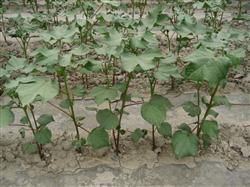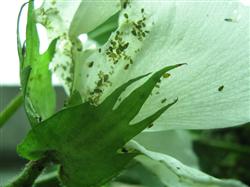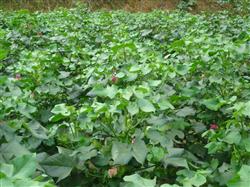How should cotton be managed in the middle and later stages of planting?

How should cotton be managed in the middle and later stages of planting? Please give guidance on cotton management methods in the middle and later period, you can refer to the following methods: first, pruning management. For the luxuriant branches and leaves that have covered the whole cotton field, the old leaves, yellow leaves and empty branches without buds in the lower part of the main stem can be removed to achieve the effect of light transmission, which can not only make the leaves better absorb sunlight, but also disperse moisture and reduce the occurrence of Verticillium wilt. Second, apply superfluous buds at the right time. The superfluous bud mainly grows at the junction of the fruit branch and the main stem, will not form cotton peach, but will consume a lot of nutrients, resulting in insufficient nutrition and shedding of the bud, so it should be erased at any time. Not all the superfluous buds have to be removed, and sometimes the axils of the middle and upper fruit branches can be retained to increase the chances of setting peaches. Third, beat the heart. It is necessary to top timely, which can not only control the height of cotton plants, but also achieve the effect of ventilation and light transmission, so that nutrients can better serve buds and bolls, so as to increase peach rate and boll weight, and help to increase production and income. If topping too early, nutrients will be lost to the upper branches and leaves, resulting in overgrowth, covering the lower leaves and affecting ventilation and light transmission. If the topping is too late, the nutrition supply of autumn peaches will be insufficient, resulting in late ripening and affecting the yield. According to experience, generally speaking, about 2 early autumn peaches are the most suitable time for topping. The management of cotton in the middle and later period has a great effect on the yield of cotton, which should be timely and timely, and at the same time, it should be combined with ploughing and loosening soil to ensure the rate of peach bearing and increase the yield. Click to get more cotton planting technology click to get more food crop planting technology
- Prev

How to control the blind Toona sinensis by planting cotton?
How to control the blind Toona sinensis by planting cotton? Please introduce the method that cotton blind stink bug can cause harm in cotton seedling stage and bud and boll stage. Now it is the bud blooming and boll setting period of cotton reproductive growth, and it is also the main harmful period of blind stink bug, which can cause cotton buds and bolls to fall off. And the current transgenic insect-resistant cotton on the blind Toona sinensis and other piercing.
- Next

How to manage cotton in the middle and later stage?
How to manage cotton in the middle and later stage? Please introduce the management methods of cotton in the middle and later stage, we can refer to the following methods for management: first, flower and boll stage management (1) re-application of flower and boll fertilizer, application of top fertilizer. Cotton usually blossoms around July 10. Fertilization at the flower and boll stage generally accounts for 50% of the topdressing amount in the growth period, which can be advanced appropriately.
Related
- The first cup of black tea in spring, the flavor and history of tea gardens in Kenya, Africa
- The computer can not only choose potatoes, but also grow tea rice. AI will grow winter oolong tea champion.
- It is not only the inflated tea bitten by insects, but also engraved with the four seasons tea in Beipu.
- The Oriental Beauty Tea Festival in Zhuxian County takes the stage at the weekend to experience the plus-size feast of oil tea.
- & quot; Oriental Beauty Tea & Exploration of Emei in Hsinchu, the hometown of quot;
- The new variety of strawberry "Tainong 1" dessert is the first choice with mellow aroma. Crimson gorgeous
- History of Tea in Taiwan: from Wild Inner Mountain to Export Tea Garden
- Two types of Taiwan Oriental Beauty Black Tea won the British three-Star Award for Childhood Tea Xiang Zhang Jiaqi changed from pilot to champion tea maker.
- Banana species and varieties: the planting history of Taiwan Xianren banana and dwarf banana is long, is banana disease resistant?
- Coffee planting Technology: Qianjie Coffee from Seedling to harvesting

